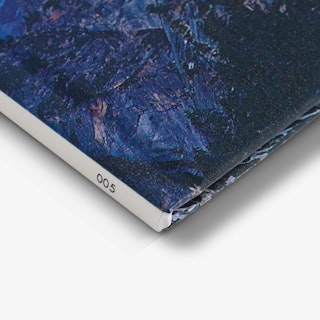A Comprehensive Guide to the Refine of Hardbound Books Printing
When you start the journey of hardcover book printing, understanding the entire process is crucial. From preparing your manuscript to choosing the right products, each action plays an important function in the end product. You'll require to consider design aspects and printing strategies that fit your vision. As you navigate through binding and quality control, you'll find that every choice impacts guide's total allure. What comes next in this detailed process?
Understanding the Hardcover Publication Framework
When you discover the world of hardcover publications, you'll quickly see that their framework is deliberate and distinct. You'll discover a material or leather covering, which not only improves looks but also adds to the book's long life.
The message block itself consists of multiple signatures, or folded sheets, sewn with each other for toughness. You'll see that the spine is reinforced, permitting a smooth lay-flat reading experience - hardcover books. Additionally, the book's weight usually shares a feeling of high quality and durability
Hardcover books commonly feature a dust coat, which works as an advertising and marketing tool while safeguarding the cover. Recognizing these components aids you value the workmanship behind hardcover publications and their special allure in the literary world.
Manuscript Preparation and Modifying
Getting your manuscript prepared for printing is crucial, and it begins with proper format standards. You'll require to understand the modifying process to improve your work and ensure it reverberates with viewers. Plus, understanding proofreading techniques can help you catch those troublesome mistakes prior to your book goes to print.
Manuscript Formatting Guidelines
Correct manuscript formatting is necessary for creating a professional-looking hardbound book. Begin by picking a conventional typeface like Times New Roman or Arial in 12-point size. Usage double-spacing throughout the paper to boost readability. Set your margins to 1 inch on all sides, providing your message area to breathe. Number your pages in the leading right corner, and include your phase titles at the start of each new section. Use clear headings to suggest areas, and prevent excessive formatting like strong or italics unless essential. Make certain to proofread your manuscript for consistency in vogue, making sure that everything from punctuation to spacing follows your chosen standards. Following these steps will set a solid foundation for your book.
Modifying Refine Essentials
Editing your manuscript is a crucial step that can change it from a rough draft right into a refined last item. Remember, editing and enhancing isn't just concerning repairing mistakes; it's about fine-tuning your voice and ensuring your message resonates with visitors. Welcome the process, and you'll see your manuscript sparkle.
Proofreading Methods Overview
Once you have actually brightened your manuscript via modifying, the following step is to assure it's correct that could sidetrack viewers. Begin by pausing after modifying; fresh eyes catch errors much better. Read your manuscript aloud-- this assists you listen to awkward phrasing and place typos. Use electronic devices like spell checkers for initial scans, however do not count entirely on them. Think about printing your manuscript; analysis on paper can disclose mistakes that displays miss out on. Emphasis on one kind of mistake at once, whether it's punctuation or grammar, to prevent feeling bewildered. Ultimately, get a trusted close friend or professional proofreader to offer a fresh point of view. Their feedback can highlight problems you may ignore.
Designing guide Cover and Inside
When you're making your book cover and interior, you'll wish to concentrate on vital design elements that catch your target market's interest. Selecting the best typography styles and thoroughly selecting shades and imagery can make all the difference in sharing your publication's style. Let's explore just how these options can raise your job and bring in visitors.
Vital Design Components
Creating an eye-catching publication cover and a well-designed inside is important for bring in visitors and enhancing their experience. Pick colors and photos that reflect your publication's theme and state of mind.
A clean, orderly layout helps readers navigate easily. Bear in mind, a natural style throughout your publication cultivates a professional look that can considerably influence a reader's decision to select it up.
Picking Typography Styles
Typography plays an essential role in both the book cover and indoor style, forming exactly how viewers perceive your content. When choosing typography styles, consider your book's category and target audience. A traditional serif font may work well for literary fiction, while a contemporary sans-serif may fit a modern book. Warranty readability; your text ought to be easy on the eyes, especially for longer passages. Pay interest to font size and line spacing, as these elements impact overall flow. Mixing typefaces can include interest, however limit it to two or three to maintain coherence. Lastly, think of a fantastic read pecking order-- use different designs for headings and body message to lead viewers easily with your work. Your typography options will considerably affect the reader's experience.
Color and Images Choice
Choosing the best shades and imagery is essential for recording viewers' focus and communicating your publication's styles. Start by considering your style; dynamic shades may help a kids's book, while low-key tones fit a mystery book. hardcover books. Use imagery that reverberates with your material-- images, illustrations, or abstract layouts can improve your message
Think of the feelings you wish to stimulate. Warm shades can develop excitement, while cool shades often communicate peace. When developing the cover, make sure the imagery doesn't overwhelm the title and writer's name; quality is essential. Inside, utilize regular color pattern that complement your typography. This natural method not just boosts your publication's visual however likewise improves the viewers's experience, making it a lot more memorable.
Picking the Right Paper and Materials
When choosing paper and products for your hardbound publication, it's vital to consider just how they'll influence the total appearance and feel of your project. Begin by selecting the ideal paper weight; larger supply usually conveys quality and durability, while lighter paper can create a more delicate touch. Consider the finish as well; shiny paper boosts images and shades, while matte can supply an innovative, downplayed appearance.
Don't forget the cover materials. Cloth, leather, or published paper can establish the tone for your publication. If your job includes images, select acid-free paper to avoid yellowing with time. Furthermore, think of the binding materials; making use of high-quality glue warranties your book lasts.
Eventually, the options you make below mirror your vision, so put in the time to sample various products (hardcover books). Your selections will certainly assist create a publication that's not only aesthetically attractive but additionally resilient and functional
The Printing Process: Methods and Technologies
A variety of printing methods and modern technologies can bring your Our site hardcover book to life, each offering distinct benefits. Digital printing is a preferred choice for short runs, permitting for fast turnaround and affordable options.
For unique results, you might consider methods like aluminum foil stamping or embossing, which can add an extravagant touch to your cover. In addition, you can opt for various inks, including environment-friendly alternatives that satisfy eco aware viewers. Understanding these methods helps you make notified decisions, ensuring your hardcover publication not only looks excellent but also meets your production requires properly. Pick the appropriate strategy to boost your publication's charm and impact.
Binding Approaches for Hardcover Books
A number of binding approaches can change your hardcover publication into a eye-catching and resilient item. Another technique is the perfect binding, which makes use of adhesive to hold the web pages together, allowing for a smooth back however much less durability compared to instance binding.
You might likewise consider spiral binding, which enables your publication to lay flat, making it suitable for handbooks or workbooks. Nonetheless, it doesn't provide the very same safety cover as case binding. Finally, there's the saddle stitch technique, ideal for smaller sized books, where sheets are folded and stapled together. Each binding technique has its benefits and fits various demands, so think about your book's function and target market when selecting the most effective alternative for your task.
Quality Control and Final Touches
After choosing the right binding method for your hardbound publication, top quality control comes to be vital to confirm your end product meets your assumptions. Beginning by checking the published pages for any errors or variances in shade and layout. You don't desire to miss out on any type of typos or misprints that could affect your viewers' experience.
Following, examine the binding honesty. Confirm the pages see here are firmly affixed which the spinal column is tough. A well-bound publication not only looks professional yet additionally feels durable in your hands.
In addition, take note of the cover. Try to find any kind of scuff marks or imbalances in the artwork. Make sure they're used regularly throughout all copies. if you have actually chosen for unique coatings like embossing or foil marking.
Lastly, perform a thorough examination of the entire batch before moving to circulation. This method, you can validate that every book mirrors your high requirements.
Regularly Asked Questions
Just how Long Does the Hardcover Publication Printing Process Typically Take?

What Is the Minimum Order Quantity for Hardcover Books?
The minimum order amount for hardbound books usually begin around 100 duplicates, however it can vary based on the printer. You should check with your picked printing solution for their particular requirements and rates.

Can I Publish Hardbound Books in Custom Sizes?
Yes, you can print hardcover books in customized sizes. Lots of printing services supply versatility with dimensions, allowing you to select a style that fits your project. Simply verify the specifications before placing your order.
Are There Eco-Friendly Options for Hardbound Publication Printing?
Yes, you can locate eco-friendly options for hardcover publication printing. Many business make use of recycled products and lasting inks. Just ask your printer about their green techniques to assure your task lines up with your environmental values.
What Are the Expenses Connected With Hardcover Book Printing?
When taking into consideration hardbound publication printing expenses, you'll need to factor in products, style, and printing techniques. Additional expenses like shipping and binding can additionally affect your general budget, so strategy appropriately for your job.
When you commence the trip of hardcover book printing, recognizing the entire procedure is essential.A selection of printing strategies and innovations can bring your hardbound publication to life, each offering one-of-a-kind advantages. Exactly how Lengthy Does the Hardcover Book Printing Process Typically Take?
The hardcover book printing procedure normally takes around 2 to 6 weeks.Yes, you can find environmentally friendly alternatives for hardbound book printing.
Comments on “Essential Hardcover Books for Every Genre Enthusiast”